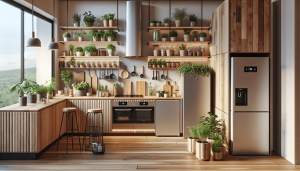Creating a sustainable landscape around our home is not only beneficial for the environment but also enhances the beauty and functionality of our outdoor spaces. In this article, we explore practical steps and tips to transform our garden into an eco-friendly haven. By choosing native plants, conserving water, and incorporating organic gardening practices, we can cultivate a thriving landscape that supports local wildlife and requires minimal maintenance. Together, let’s embrace sustainable landscaping and make a positive impact on the planet, right from our own backyard. How often have we found ourselves marveling at the beauty of nature and wishing we could bring a piece of that into our own backyards? It’s natural to want a beautiful, thriving landscape around our homes, but how can we create this in an environmentally-friendly way? That’s where sustainable landscaping comes in. Let’s dive deep into how we can transform our outdoor spaces into sustainable and aesthetically pleasing environments.

Understanding Sustainable Landscaping
Sustainable landscaping, simply put, is gardening and landscaping techniques that align with the principles of environmental stewardship. It involves using resources efficiently, reducing waste, supporting local wildlife, and investing in the health of our soil and plants.
Benefits of Sustainable Landscaping
Why should we consider sustainable landscaping for our homes? Well, the benefits are numerous:
- Environmental Impact: Reduces carbon footprint, conserves water, and supports biodiversity.
- Economic Savings: Less need for water, fertilizers, and pesticides translates to savings.
- Health Benefits: Reduced exposure to chemicals promotes better health for us and our families.
- Aesthetic Appeal: Beautiful and diverse plants enhance the visual appeal of our homes.
Planning for a Sustainable Landscape
Before jumping into planting trees and flowers, it’s essential to start with a solid plan.
Assessing Our Site
Understanding the unique characteristics of our property is vital. This includes evaluating the soil, climate, sunlight exposure, and existing vegetation. Mapping out these factors will help guide us in selecting the right plants and materials.
Setting Goals
What do we want from our sustainable landscape? Do we want a space for relaxation, a habitat for wildlife, or a productive garden? Setting clear goals will help keep our project focused and aligned with our vision.
Design Principles
While planning our landscape design, let’s consider the following sustainable principles:
- Minimize Impervious Surfaces: These limit water infiltration and increase runoff.
- Consider Water Flow: Ensure proper drainage and reduce erosion.
- Maximize Native Plants: These require less maintenance and support local ecosystems.
- Create Diverse Habitats: Encourage biodiversity by creating varied plantings and structures.
Choosing Plants Wisely
The plants we select play a massive role in the sustainability of our landscape.
Native vs. Non-Native Plants
Native plants are adapted to our local climate, soil, and pests, requiring less water, fertilizer, and pesticides. Non-native plants can become invasive, disrupting local ecosystems.
Table: Comparison of Native vs. Non-Native Plants
| Aspect | Native Plants | Non-Native Plants |
|---|---|---|
| Water Consumption | Low | Often high |
| Maintenance | Minimal | Often high |
| Pest Resistance | High | Often low |
| Impact on Local Wildlife | Supports local ecosystems | Can disrupt local ecosystems |
Drought-Resistant Plants
Selecting drought-resistant plants can significantly reduce our water usage. These plants are adapted to thrive in dry conditions and often require minimal supplemental watering.
Edible Landscaping
Incorporating edible plants like fruits, vegetables, and herbs not only provides fresh produce but also contributes to a sustainable yard. Imagine picking fresh tomatoes from our garden or plucking herbs for our cooking!
Soil Health
Healthy soil is foundational for any sustainable landscape.
Soil Testing
Conducting a soil test will provide insights into its pH, nutrient levels, and structure. This information is crucial for selecting the right plants and amendments.
Organic Amendments
Adding organic matter such as compost, manure, or mulch can improve soil structure, water retention, and nutrient content. It also fosters a healthy microbial environment.
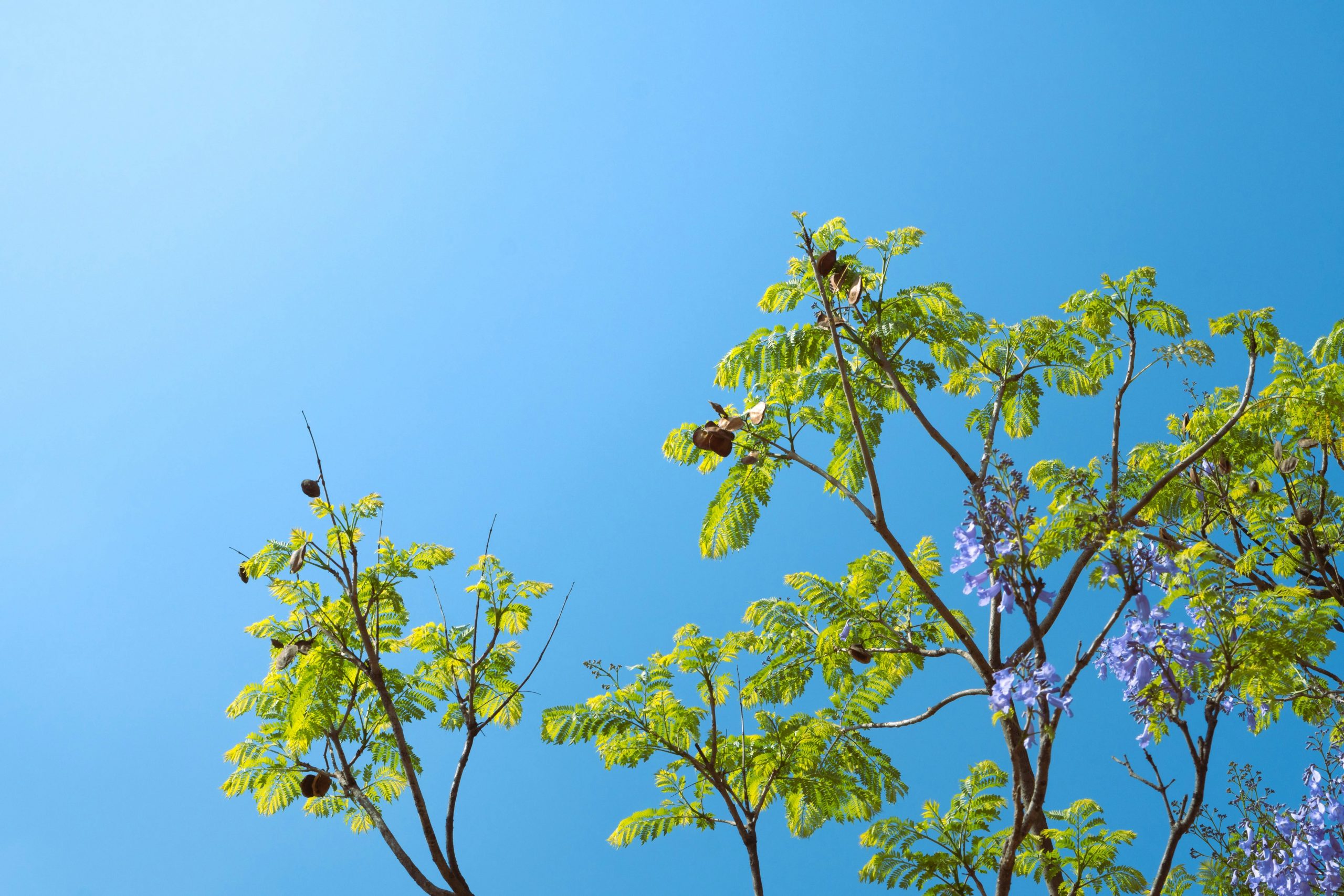
Efficient Water Usage
Water conservation is a key component of a sustainable landscape.
Rainwater Harvesting
Collecting rainwater is an excellent way to reduce our reliance on municipal water supplies. Rain barrels and cisterns are popular options for rainwater harvesting.
Drip Irrigation Systems
Drip irrigation delivers water directly to the plant roots, minimizing evaporation and runoff. It’s a highly efficient way to water our plants.
Mulching
Mulch helps retain soil moisture, suppress weeds, and moderate soil temperature. Organic mulches, like wood chips or straw, add nutrients as they decompose.
Sustainable Lawn Practices
Lawns can be high-maintenance but adopting sustainable practices can minimize their environmental impact.
Alternative Lawn Options
Consider replacing some or all of our lawns with ground covers, native grasses, or ornamental grasses, which require less water and maintenance.
Mowing and Maintenance
When mowing, let’s keep our grass at a taller height (around 3 inches) to promote root growth and drought resistance. Also, leaving grass clippings on the lawn can return nutrients to the soil.
Fertilizers and Pesticides
Opt for organic fertilizers and natural pest control methods. Reducing chemical usage will benefit our soil health and local wildlife.
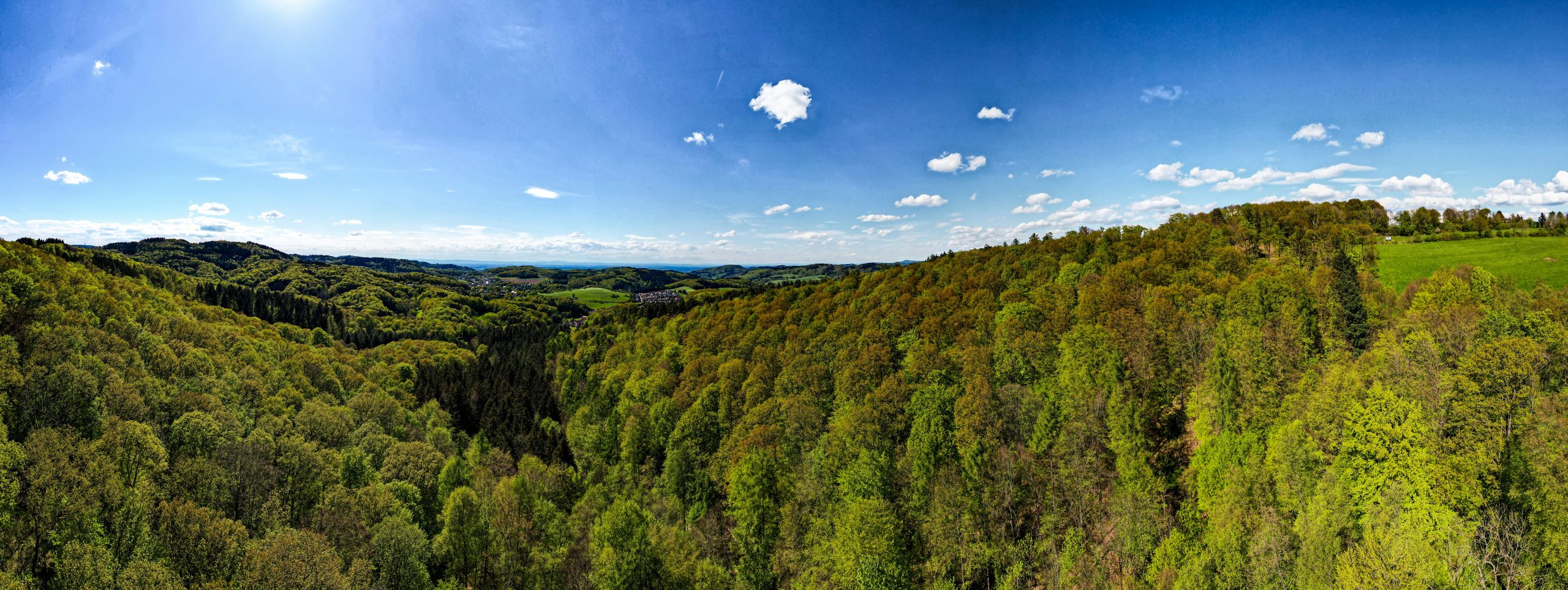
Supporting Local Wildlife
A sustainable landscape is inviting to local wildlife.
Bird and Pollinator-Friendly Plants
Including plants that provide nectar, seeds, and shelter will attract birds, bees, butterflies, and other beneficial creatures.
Creating Habitats
Providing birdhouses, bat boxes, and water sources can create inviting habitats for wildlife. Avoid using chemicals that can harm these visitors.
Pesticide Use
Opt for natural pest management strategies. Integrated Pest Management (IPM) focuses on long-term prevention through a combination of biological, cultural, and mechanical controls.
Renewable Materials and Reuse
Using sustainable materials in our landscape projects reduces environmental impact.
Recycled Materials
Utilizing recycled materials like reclaimed wood, recycled concrete, and salvaged metals can add character to our landscape while being eco-friendly.
Local Materials
Choosing locally-sourced materials reduces transportation emissions and supports the local economy.
Using Recyclable or Biodegradable Products
When possible, select products that are recyclable or biodegradable to minimize waste production.
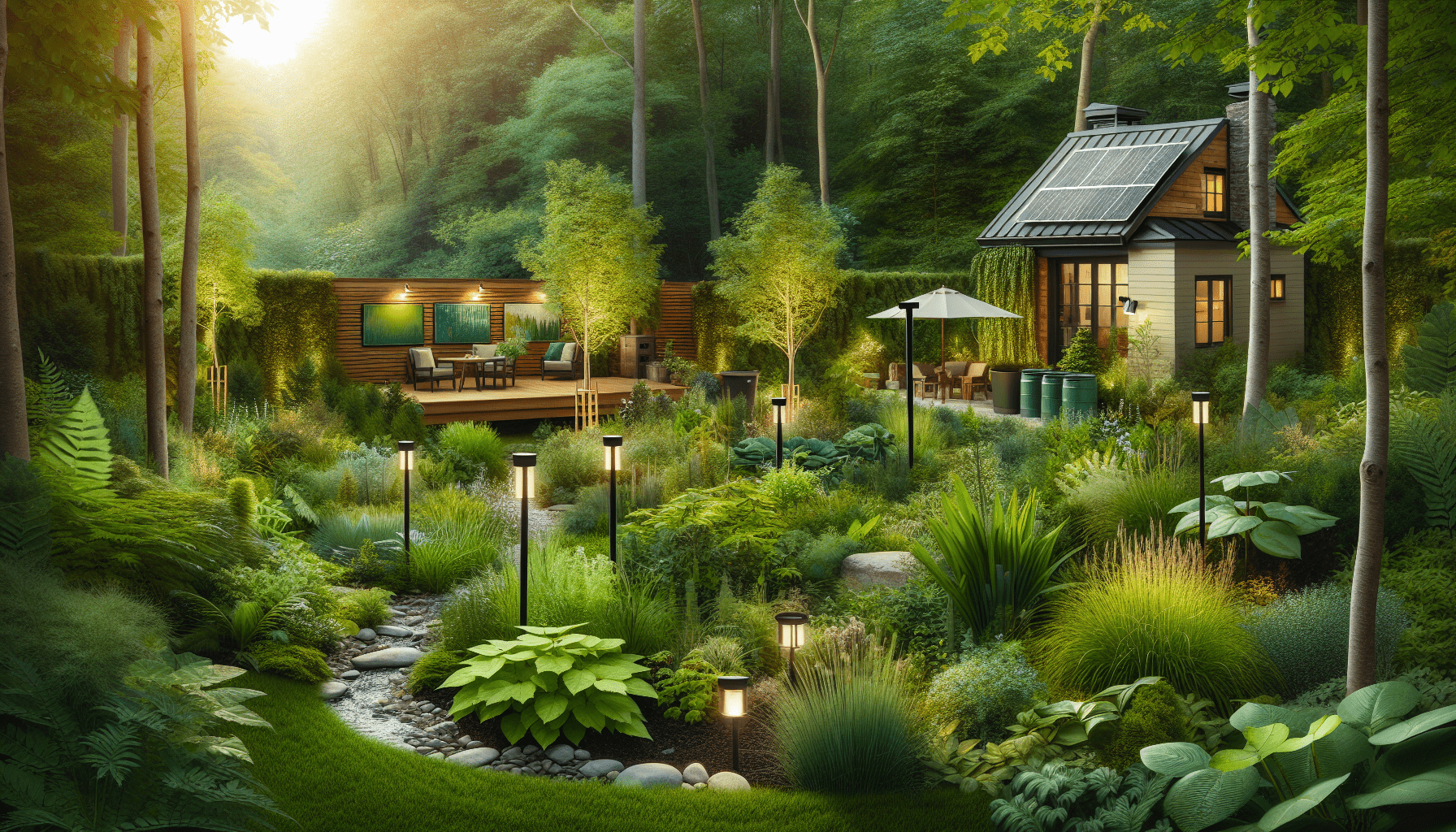
Reducing Waste
Efficiently managing waste is crucial in sustainable landscaping.
Compositing
Composting yard waste and kitchen scraps converts organic waste into valuable compost. It reduces landfill waste and improves soil health.
Grasscycling
Leaving grass clippings on the lawn after mowing recycles nutrients back into the soil and reduces yard waste.
Mulching Yard Waste
Shredding fallen leaves and branches to use as mulch cuts down on waste and benefits our soil.
Sustainable Hardscape Elements
Hardscape elements like paths, patios, and walls can be integral to our sustainable landscape.
Permeable Paving
Permeable pavers allow water to infiltrate the soil, reducing runoff and promoting groundwater recharge.
Green Roofing
Installing green roofs on structures like sheds or garages can provide insulation, reduce stormwater runoff, and support plant life.
Natural Stone and Timber
Opting for natural stone and sustainably harvested timber can lessen our environmental footprint compared to synthetic materials.
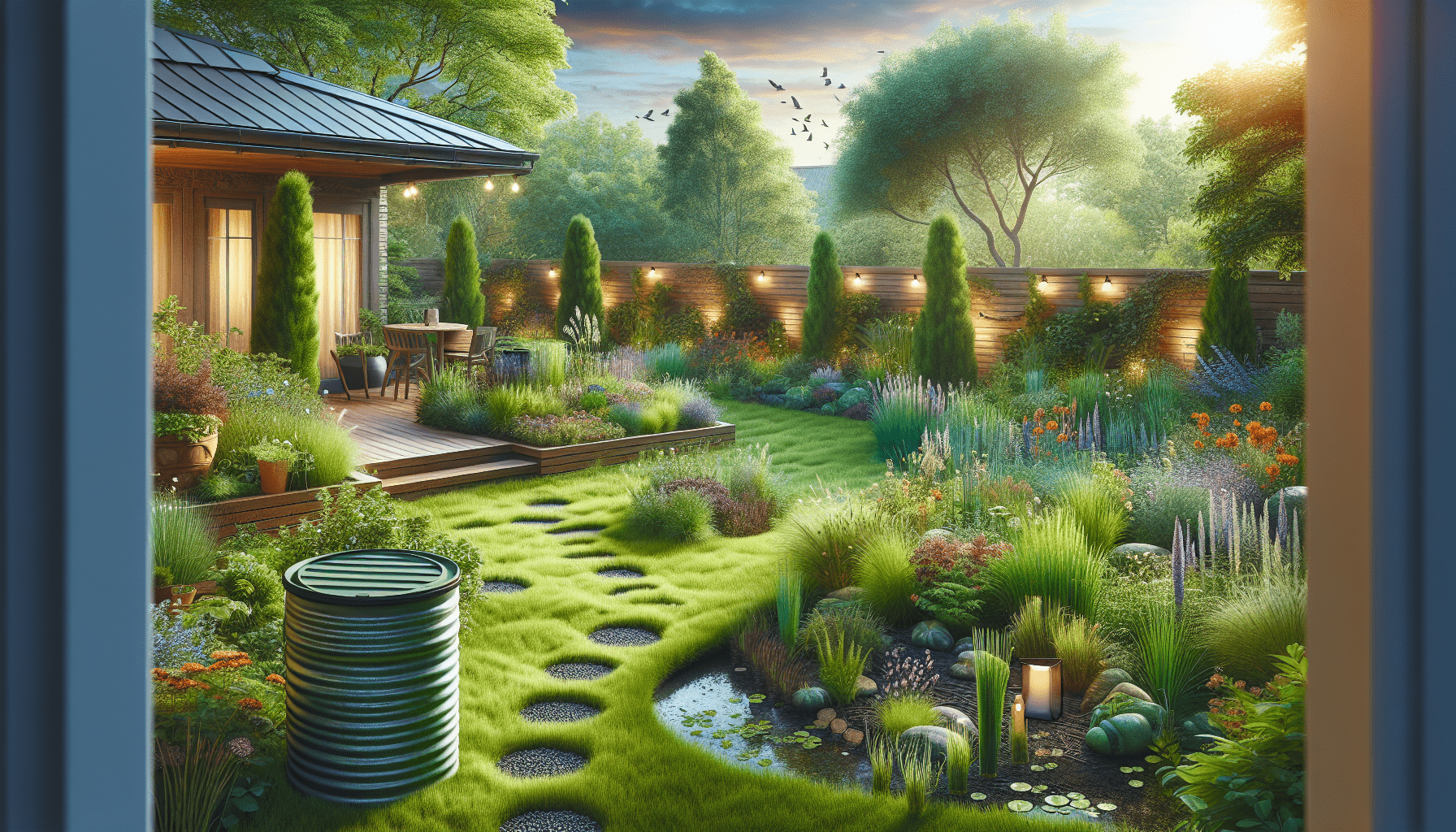
Maintaining Our Sustainable Landscape
Proper maintenance ensures the longevity and health of our sustainable landscape.
Seasonal Care
Adapt our practices according to the seasons. For example, composting in the fall, mulching in the spring, and conserving water during summer heatwaves.
Monitoring and Adjusting
Continually monitor soil health, plant growth, and wildlife activity. Adjust our practices as needed to address any issues effectively.
Education and Engagement
Stay informed and engaged with ongoing education about sustainable practices. Encourage neighbors and community members to adopt similar approaches, amplifying the positive impact.
Conclusion
Creating a sustainable landscape around our home is not just about planting trees and flowers; it’s about fostering a harmonious relationship with nature. By considering site characteristics, choosing the right plants, managing soil health, conserving water, supporting wildlife, and using renewable materials, we can build an eco-friendly oasis that brings beauty and vitality to our surroundings.
Remember, every small step we take can have a significant impact. Let’s embark on this journey toward sustainability, one thoughtful decision at a time.


